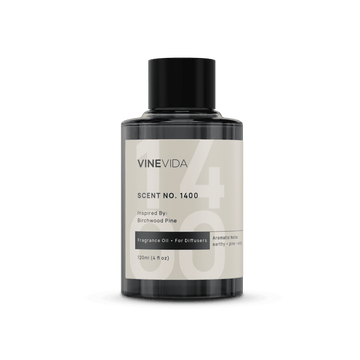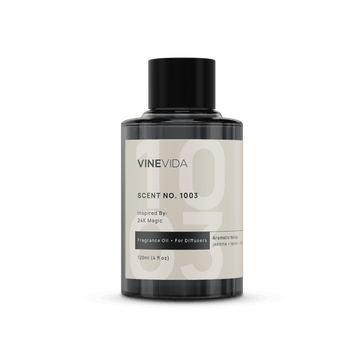Cilantro Essential Oil: Uses, Benefits, and Blends
Scientific Name: Coriandrum Sativum
Origin: Egypt
Plant Part: Leaf
Scent: Fresh, green, spicy
Color: Pale green
Consistency: Thin
Perfumery Note: Top
Initial Aroma Strength: Moderate
Extraction Method: Steam Distillation
Suitable Blending Oils: Herbaceous fragrances like hyssop and chamomile, spices like clove leaf, citruses like lime, conifer fragrances, and resins like frankincense
Coriander Leaf / Cilantro Essential Oil From A Contrary Herb
Everything about cilantro essential oil is divisive. Even the naming.
Should we call this oil coriander leaf or cilantro?
For this article, we’ll mainly refer to the oil as cilantro oil to help discern it better from coriander seed Essential Oil, but this is purely because the herb is better known as cilantro in the States.
Cilantro oil and coriander leaf Essential Oil are the same thing, and they come from the same plant as coriander seed Essential Oil.
That said, coriander seed Essential Oil and coriander leaf/cilantro Essential Oils are extremely different, too. Both oils are excellent for digestive issues…but that is where the similarities lie. Actually, they even disagree as to treating digestive issues better in some people than in others, and we’ll address this as we go along.
Likewise, we’ll talk about what cilantro Essential Oil smells like, because there are polarized opinions on that, too.
Breaking Down the Cilantro Essential Oil’s Chemical Components
- (E)-2-Decenal: 26.8–46.5%
- Decanal: 4.4–18.0%
- Linalool: 4.3–17.5%
- Octanal: 0.5–11.2%
- (E)-2-Dodecenal: 2.7–10.3%
- 2-Decen-1-ol < 9.2%
Coriander seed Essential Oil is primarily made up of aldehydes. This group brings freshness and vitality to the scent but also has strong antimicrobial and immunomodulatory properties, as well as being able to bring about hormonal balance. (Aljaafari, 2022)
Compare this coriander seed oil, which has high levels of linalool.
These are very different oils.
Historical Uses of Cilantro Essential Oil
There is very little written about Cilantro Essential Oil; much more is written about coriander seed oil. So, it may be tempting to imagine that the properties are similar. However, they are really not.
Consider that cilantro oil is taken when the leaves are new and fresh. Coriander seed oil is taken as it has flowered, gone to seed, and is starting to die off.
Imagine the daily chores the plant went through. It needed to seduce pollinators, repel nibbling insects, deter butterflies from laying eggs on it…
It had to make an awful lot of chemical changes in those rites of passage.
But we are interested in the young, vibrant, sassy herb before all those changes took place.
The Roman herbalist Pliny wrote: ‘vis magna ad refrigerandos ardores viridi’ (‘while green, it is possessed of very cooling and refreshing properties’)[2].
While green…that’s what we want, isn’t it?
Remarkably, when it turns to seed, the essential oil of coriander seed Essential Oil then becomes warming.
Fantastic, when you think about it, really, isn’t it?
Cooling Actions of Cilantro Essential Oil
So, we are interested in its cooling nature, and this is where the difference in digestive medicine comes in. Let’s think a little about Ayurveda and how it describes the doshas.
Cooling herbs are used to balance Pitta Dosha.
Ayurveda sees health in terms of three doshas: Vata (which is cold and dry), Pitta, and Kapha. (which is thick and heavy)
Pitta dosha is seen as hot, moist, sharp, and active.
When pitta dosha goes out of balance, we see conditions that are hot and fierce.
Think of how digestive problems become acidic, like heartburn or even gastric reflux.
Another classic pitta dosha complaint is urinary infections. Hot, fierce, sore.
Pitta dosha feels like a volcano.
A great word for thinking through pitta dosha is inflammation. Tempers are inflamed. Skin is inflamed. Joints are inflamed. Thoughts are inflamed. Passions are inflamed.
Cooling oils like cilantro leaf are fantastic for all these kinds of things.
Likewise, as stated, pitta dosha is sharp, so think of sharp pains (usually a description of nerve pains), sharp tongues (Pitta dosha is a really angry state, often one that you can’t let go of), and sharp stomach cramps.
So putting those together, cilantro Essential Oil would be lovely for
- Muscular aches & pains
- Arthritis & rheumatism
- Gout
- Reactive skin conditions
- Neuralgia
- Migraine
- Neuralgia
- Heartburn
- Diarrhea
- Greasy skin
- Cystitis and water infections
Traditional Chinese Medicine Thoughts about Cilantro Essential Oil
TCM draws on the strengths of coriander leaves to circulate Chi (energy/life force) and boosts intellect by strengthening spleen/pancreas function. (It may or may not be relevant that chromosome 11 is also the insulin gene)Cilantro leaf is refreshing, fortifying, and invigorating.
Specifically, cilantro leaf Essential Oil is wonderful for encouraging appetite (in those who like the smell, of course), and the fresh juice is often recommended for patients suffering from vitamin A, B, and C deficiencies and for the relief of anxiety and insomnia. (BBhattacharjee 2001; Emamghoreishi et al., 2005)
Use cilantro Essential Oil to chase away melancholy, nervousness, and lethargy.
In his book Aromatica, Peter Holmes speaks of how coriander leaf Essential Oil essentially addresses hypersthenic/ hot and hypertonic/tense conditions. (Holmes 2019)
This hypertonic aspect was well demonstrated by Mani et al in 2011. Their trial looked at coriander leaf Essential Oil as a potential therapeutic for patients with Alzheimer’s disease. Rodent trials showed that inhaling the cilantro Essential Oil improved patients’ memories, as well as controlled their cholesterol levels and managed anticholinesterase activity.
So what is anticholinesterase activity?
Acetylcholine controls nerve impulses within the parasympathetic nervous system. In preventing the destruction of acetylcholine, anticholinesterases allow much higher levels of the neurotransmitter to build up between the nerves, triggering the parasympathetic nervous system. The parasympathetic is responsible for our rest and restoration, so emotionally we feel more relaxed, remember things better, and sleep better, but this has physiological benefits such as the pulse slowing and blood pressure dropping too.
Antiviral
According to Holmes, coriander leaf Essential Oil has good antiviral results for chickenpox and shingles. (Holmes 2019)
Cilantro Essential Oil is also deliciously refreshing and reviving when you have a cold or other respiratory infection.n
He also cites it as having a mild effect on hormonal balance and can be helpful for low progesterone or conditions where estrogen dominance can be problematic, as well as on the thyroid. (Holmes 2019)
So the question is, are you going to love cilantro Essential Oil or hate it?
What Does Cilantro Essential Oil Smell Like?
Well, that really depends on whom you’re talking to.
People disliking the fragrance of a certain oil is often explained away as having hit upon an unpleasant memory. This could also be true with cilantro oil, but several people also have a genetic predisposition towards disliking it.
We would describe the fragrance as fresh, green, vibrant, and zesty. Mouth-watering, in fact.
Compare that to the 16th-century herbalist, John Gerard, who described it as a ‘very stinking here’ with leaves of ‘venomous quality’.
It is, in fact, one of the most polarizing and divisive food ingredients known to man.
It’s not unusual for people to describe cilantro’s smell as tasting of bugs or soil and even as pungent or soapy.
Given that many tastes are driven by odor, this may be why there are a number of people who also say cilantro tastes soapy.
In chemistry earlier, we showed how cilantro Essential Oil consists mainly of aldehydes, in particular (E)-2-alkenes and n-aldehydes. (Cadwallader, 2005), (Eyres, 2005)
The unsaturated aldehydes (mostly decanal and dodecanal) in coriander leaves are described as smelling green, fruity, and pungent.
But when you smell (E)-2-decenal and (E)-2-dodecenal, they do indeed smell soapy and fatty. (Cadwallader, 2005), (Eyres, 2005)
There is a cohort of people with a specific gene mutation on chromosome 11 who can smell this second set of aldehydes. Presumably, there is some evolutionary advantage to this, but as yet, the reasons why this might be are not clear.
The Genetics of Taste and Smell
There are several gene families that are important for smell and taste.
The sweet, umami, and bitter taste receptors mainly fall within the TAS1R and TAS2R families. (Li, 2002) (Chandreshekar, 2000)
The olfactory receptor family (those concerned with smell) contains about 400 functional genes in humans. Around 40% of these olfactory receptor genes are found in chromosome 11, which constitutes just over 4% of the human genome. (Davis, 2006)
Each receptor binds to a selection of chemicals, giving us the ability to recognize certain scents. How we perceive tastes and smells can be down to differences in many of these genes.
The soapy cilantro genetic mutation seems to take place in a chromosome 11 olfactory receptor OR6A2.
But that’s not where the story ends.
Because this like / dislike spread is not equal across all ethnic groups.
The proportion of subjects classified as disliking cilantro was 21% for East Asians, 17% for Caucasians, 14% for those of African descent, 7% for South Asians, 4% for Hispanics, and 3% for Middle Eastern subjects. (Mauer, 2012)
Can this always be explained by the genetic trait? Potentially not, because the prevalence is rather low, with a heritability of around 0.087, and it is mainly found in European populations. (Erikkson, 2012)
Neither does the regularity of being exposed to cilantro make a difference, so it’s not down to how often you ate it as a child, either.
So the hunt as to why some people love coriander and others hate it continues.
Is Cilantro Essential Oil Safe To Use?
It is, however, it is, rather astringent, so avoid using cilantro Essential Oil on broken skin.
Not suitable for use in the first 16 weeks of pregnancy.
Aromatherapy
Beautifully, refreshing, invigorating, and focusing.
A tonic for people who feel nervous, melancholy, or lethargic.
Natural Perfumery
Spectacular for green fragrances. Lovely for spring and summer blends as well as smells of the forest.
Ideal for both masculine and feminine fragrances, especially for eau de colognes.
Note: Aldehydes tend to be the first chemicals to decay aromatically. After about a year, you may find that the oil does not smell as fresh and vibrant. So, whilst the shelf life of cilantro Essential Oil is about 4 years, for optimum scent vibrancy, you may want to replace cilantro Essential Oil more often.
Cilantro Essential Oil Blends: DIY Recipes
Cilantro Essential Oil Blend for Heartburn
- 19 ml Grapeseed Carrier Oil (Vitis Vinifera)
- 5 drops Cilantro Leaf Essential Oil (Coriandrum Sativum L)
- 2 drops Ginger Essential Oil (Zingiber Officinale)
- 2 drops Peppermint Essential Oil (Mentha Piperita)
Method of Preparation: Add the Essential Oils to the Grapeseed Carrier Oil and combine well.
Method of Use: Massage gently into the sternum and across the upper chest. It can also be used at the pulse point at the wrist and inner elbows. Use up to 8 times a day.
Safety: Not suitable for use during the first 16 weeks of pregnancy.
Cilantro Essential Oil Blend for Urinary Infections
- 19 ml Grapeseed Carrier Oil (Vitis Vinifera)
- 4 drops Cilantro Leaf Essential Oil (Coriandrum Sativum L)
- 4 drops Tea Tree Essential Oil (Melaleuca Alternifolia)
- 2 drops Oregano Essential Oil (Origanum Compactum Benth)
Method of Preparation: Add the Essential Oils to the Grapeseed Carrier Oil and combine well.
Method of Use: Massage gently into the lower abdomen and lower back. It can also be used at the pulse point at the wrist and inner elbows. Use up to 8 times a day.
Safety: Not suitable for use during pregnancy.
Cilantro Essential Oil Blend for Cramps
- 19 ml Grapeseed Carrier Oil (Vitis Vinifera)
- 3 drops Cilantro Leaf Essential Oil (Coriandrum Sativum L)
- 3 drops Ylang Ylang Essential Oil (Cananga Odorata)
- 5 drops Lavender Essential Oil (Lavandula Angustifolia)
Method of Preparation: Add the Essential Oils to the Grapeseed Carrier Oil and combine well.
Method of Use: Massage gently into the lower abdomen and lower back. It can also be used at the pulse point at the wrist and inner elbows. Use up to 8 times a day.
Safety: Not suitable for use during the first 37 weeks of pregnancy.
Precautions
Not suitable for use in the first 16 weeks of pregnancy.
Do not use it directly on broken skin.
Why Choose VINEVIDA
At VINEVIDA, we love botanicals and the planet they come from. We believe in stocking the best at affordable prices and supplying to the discerning, which is why we are also members of both the Alliance of International Aromatherapists and the National Association of Holistic Aromatherapy. In recognition of our excellent standard of product, we are proud to hold a 2021 Certificate of Registration as a Cosmetic Products Establishment with the U.S. Food and Drug Administration.
Our joy at seeing people make beautiful things means we stock from the smallest amounts to the largest. Our bulk Essential Oils’ prices begin with our smallest Essential Oil of 10ml to our largest of 396lb, meaning any manufacturing company can afford to stock as many or as few oils as their business can accommodate without running the risk of spoilage of some of nature’s most precious commodities. So why not see if you can save money by buying your Cilantro Essential Oil in bulk? Remember how stable it has proven to be, so as long as you store it carefully, it should last and last.
Don’t forget to; we like to look after our customers with reasonable prices and excellent customer service, and reward the loyal ones with money-off discounts over the year.
Conclusion
So, why not check out if you qualify for our loyalty scheme and start saving today with an environmentally friendly choice of oil for skin, hair, massage oils, and soapmaking? Add VINEVIDA Cilantro Essential Oil to your cart today.

You may also like
Recently viewed














 Certificate of Analysis
Certificate of Analysis


















